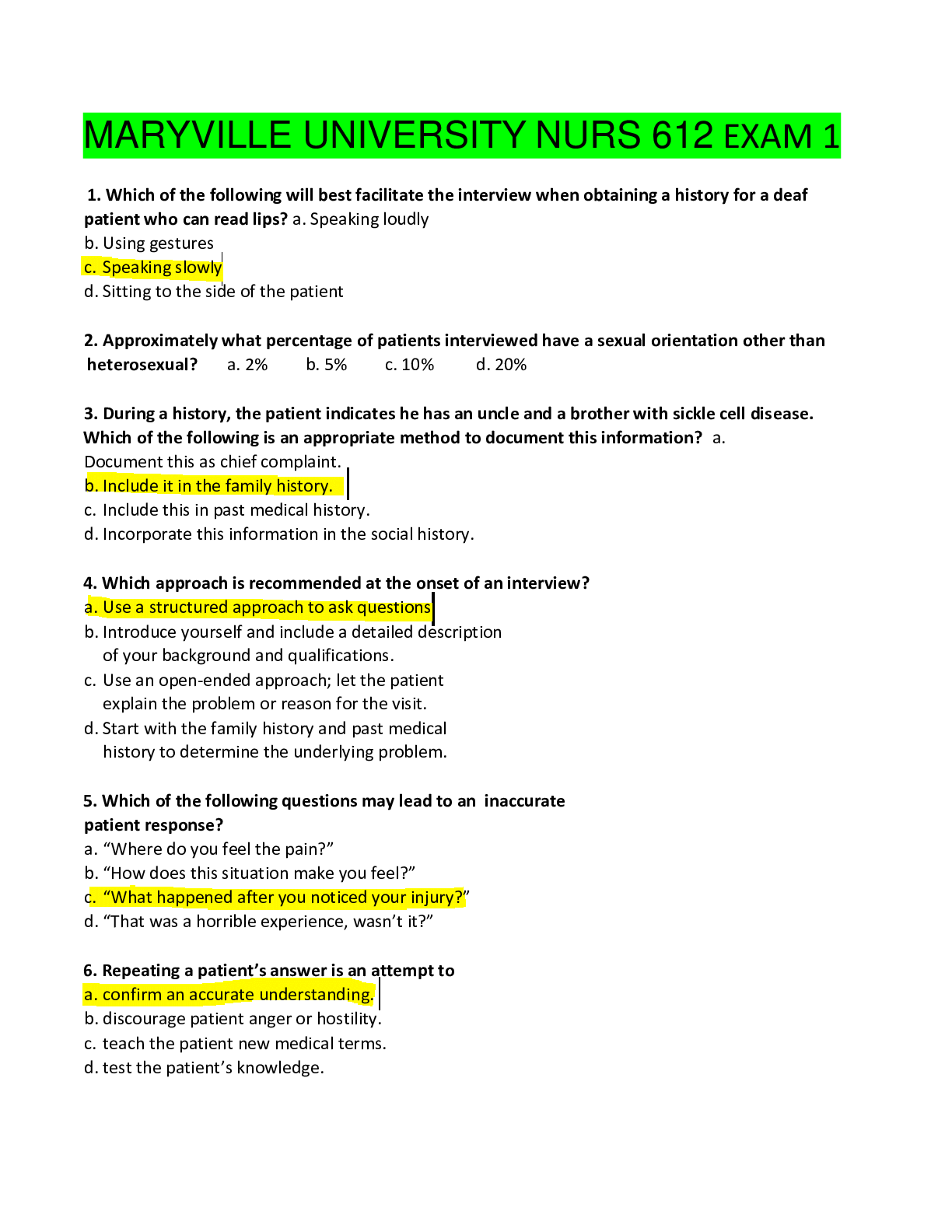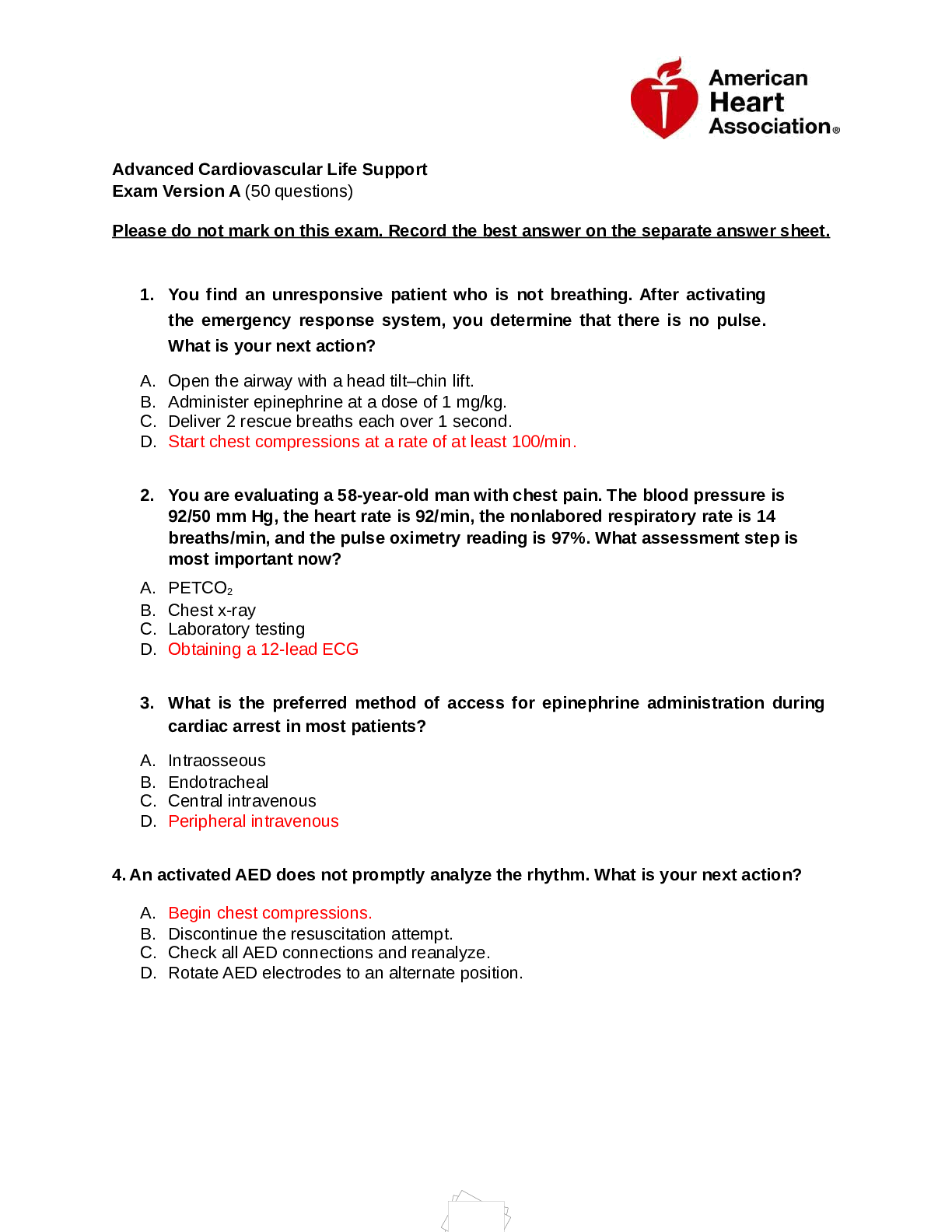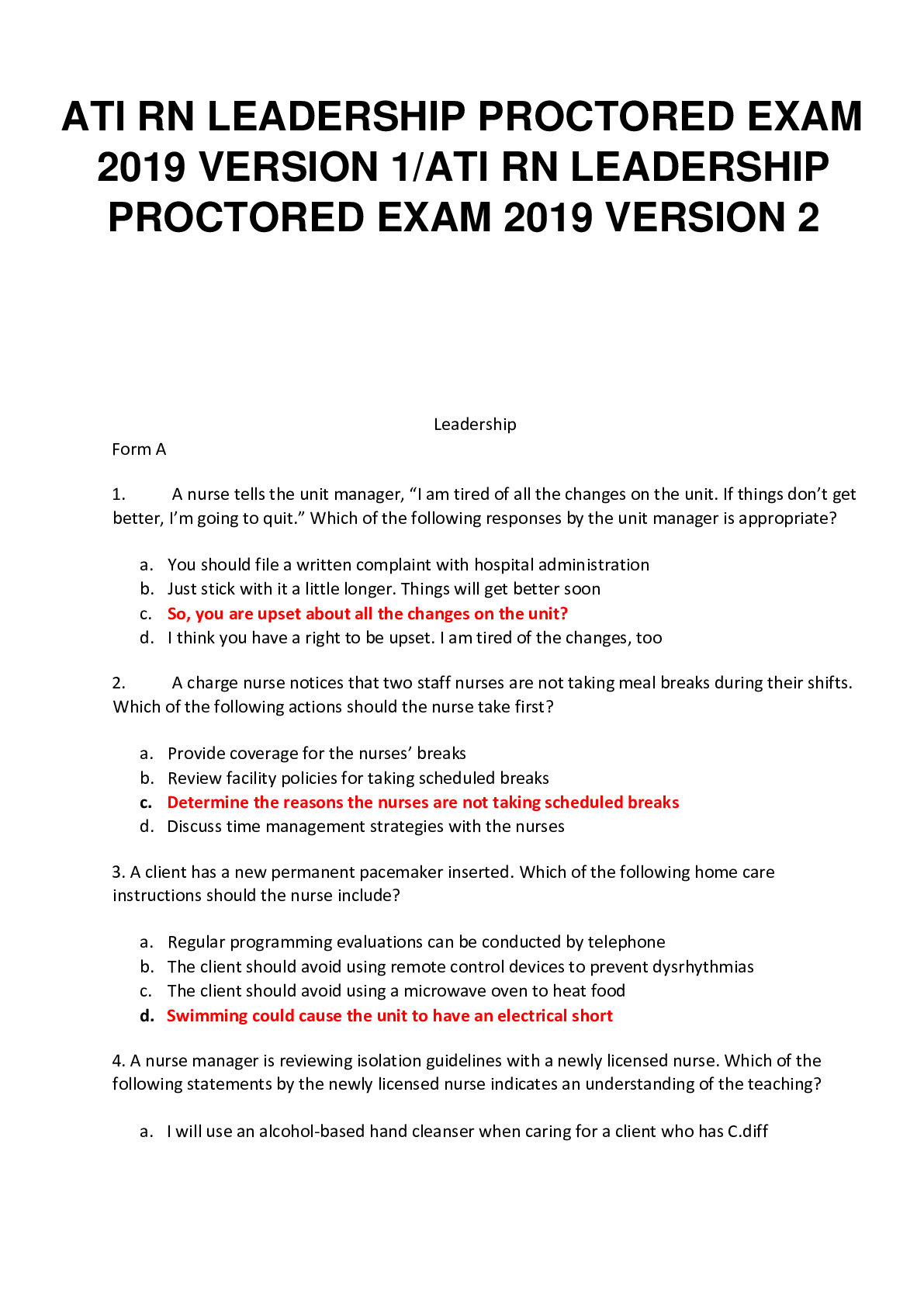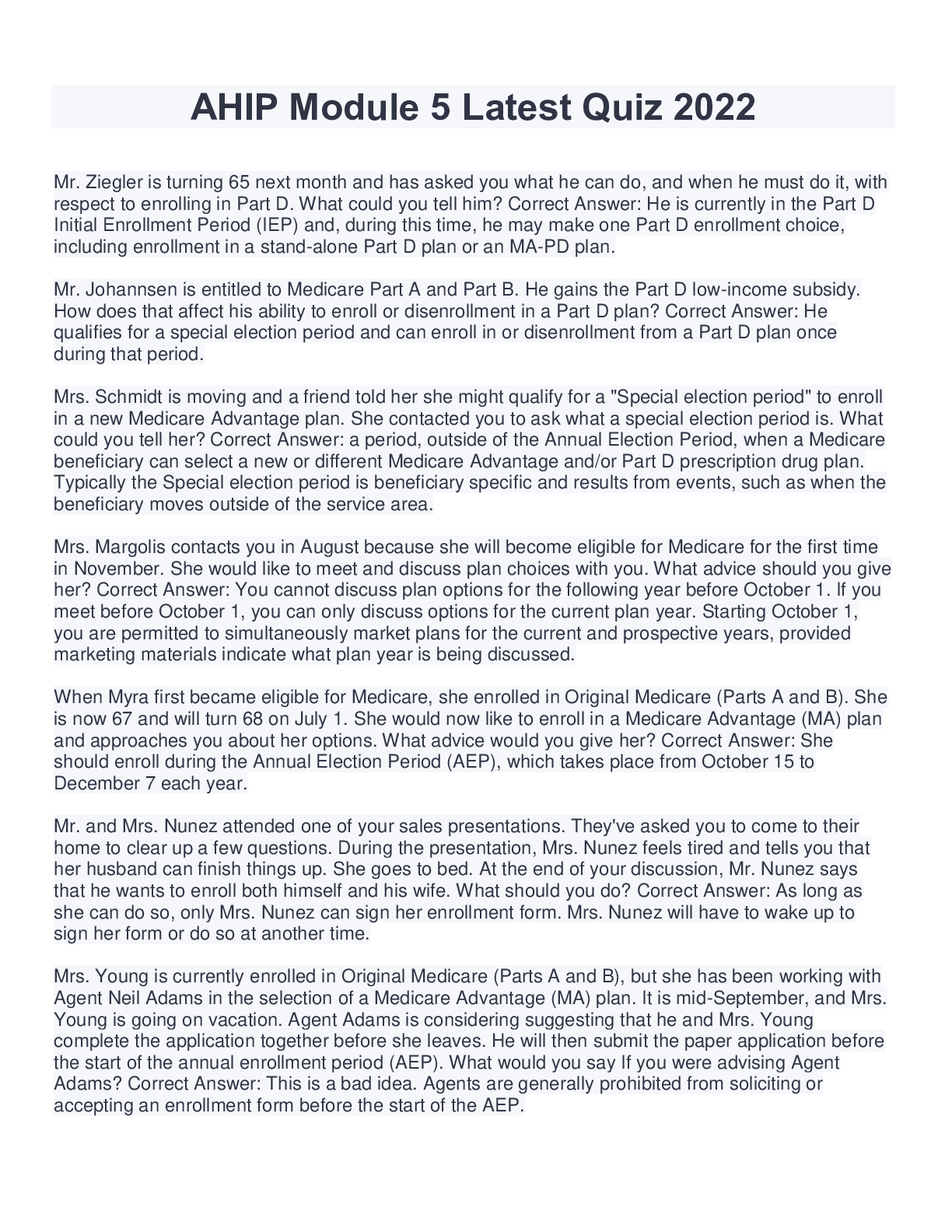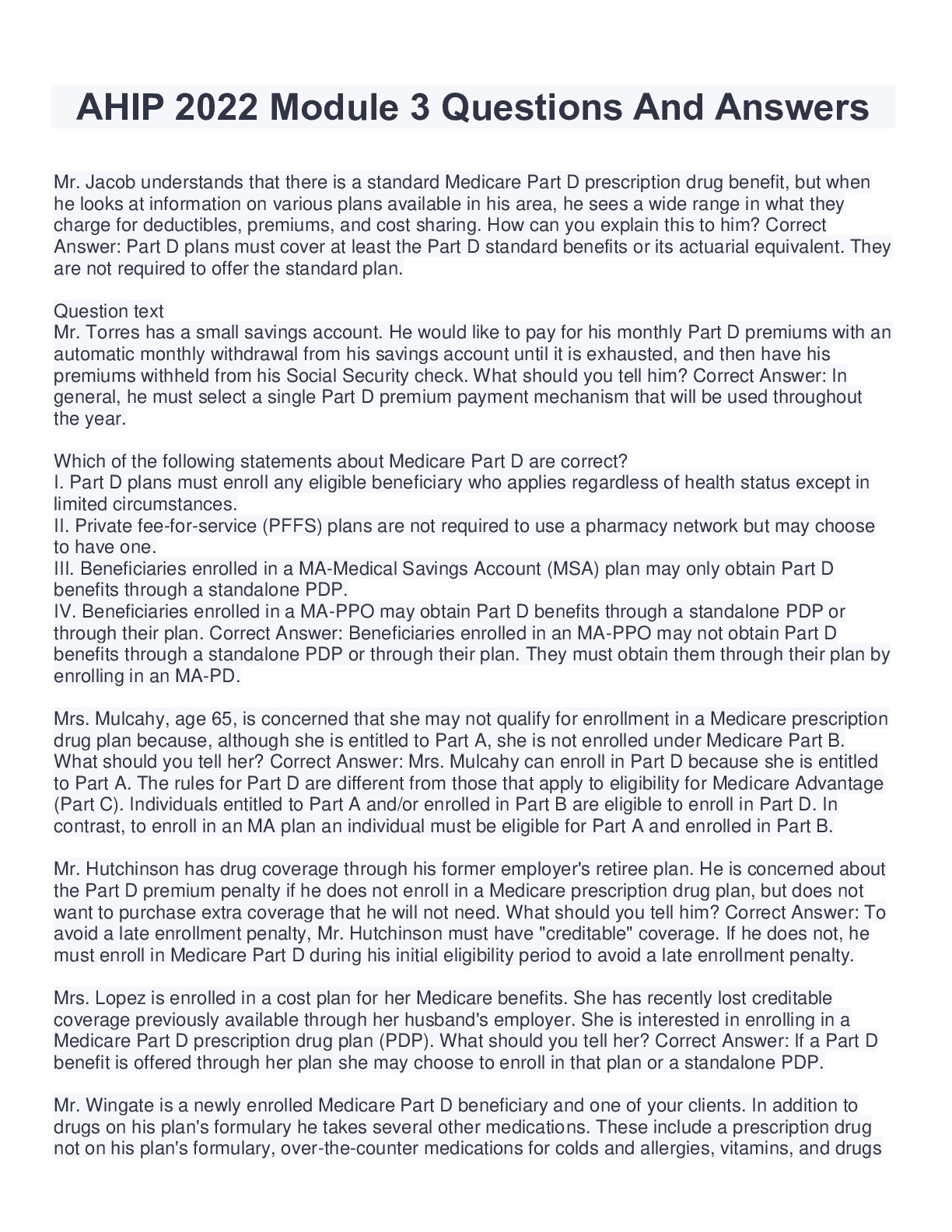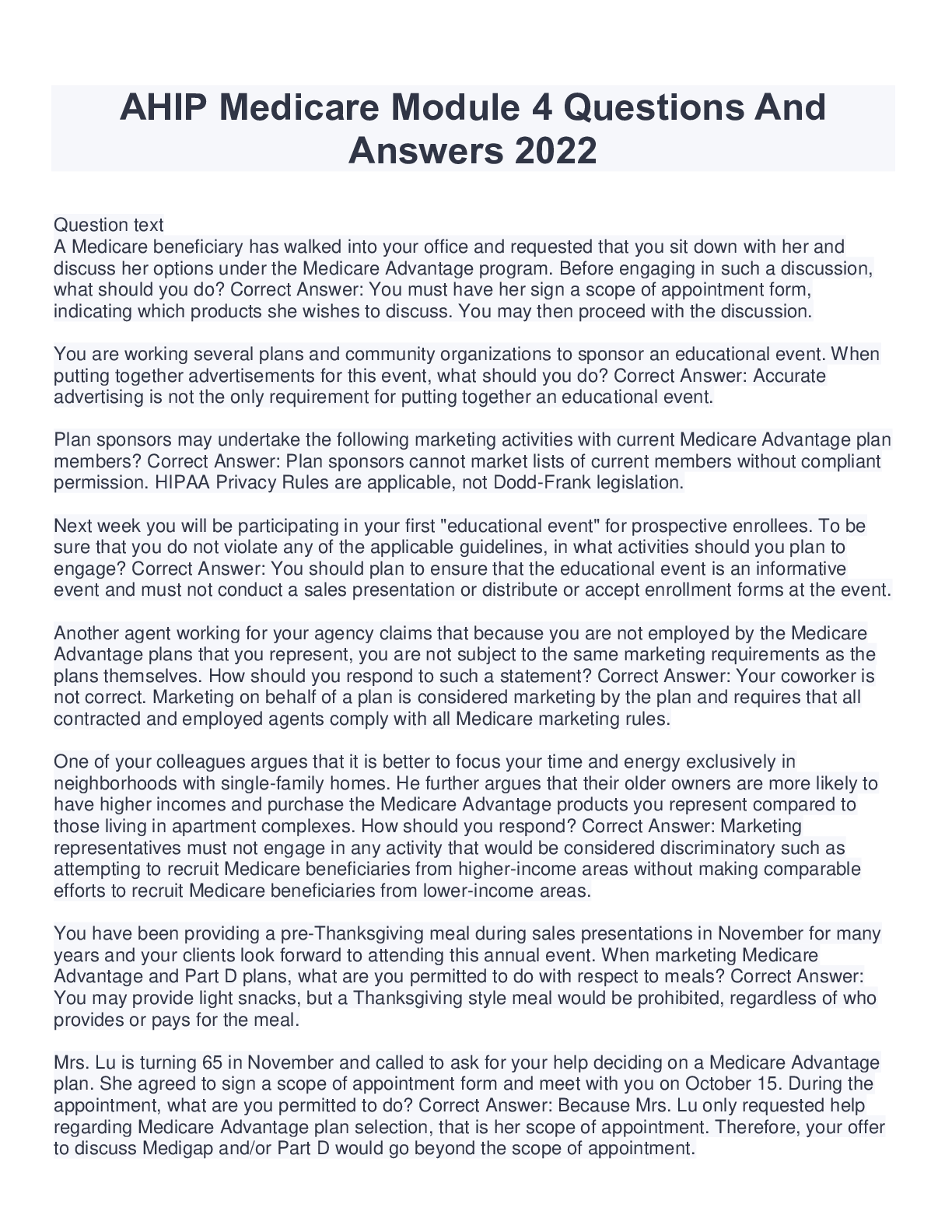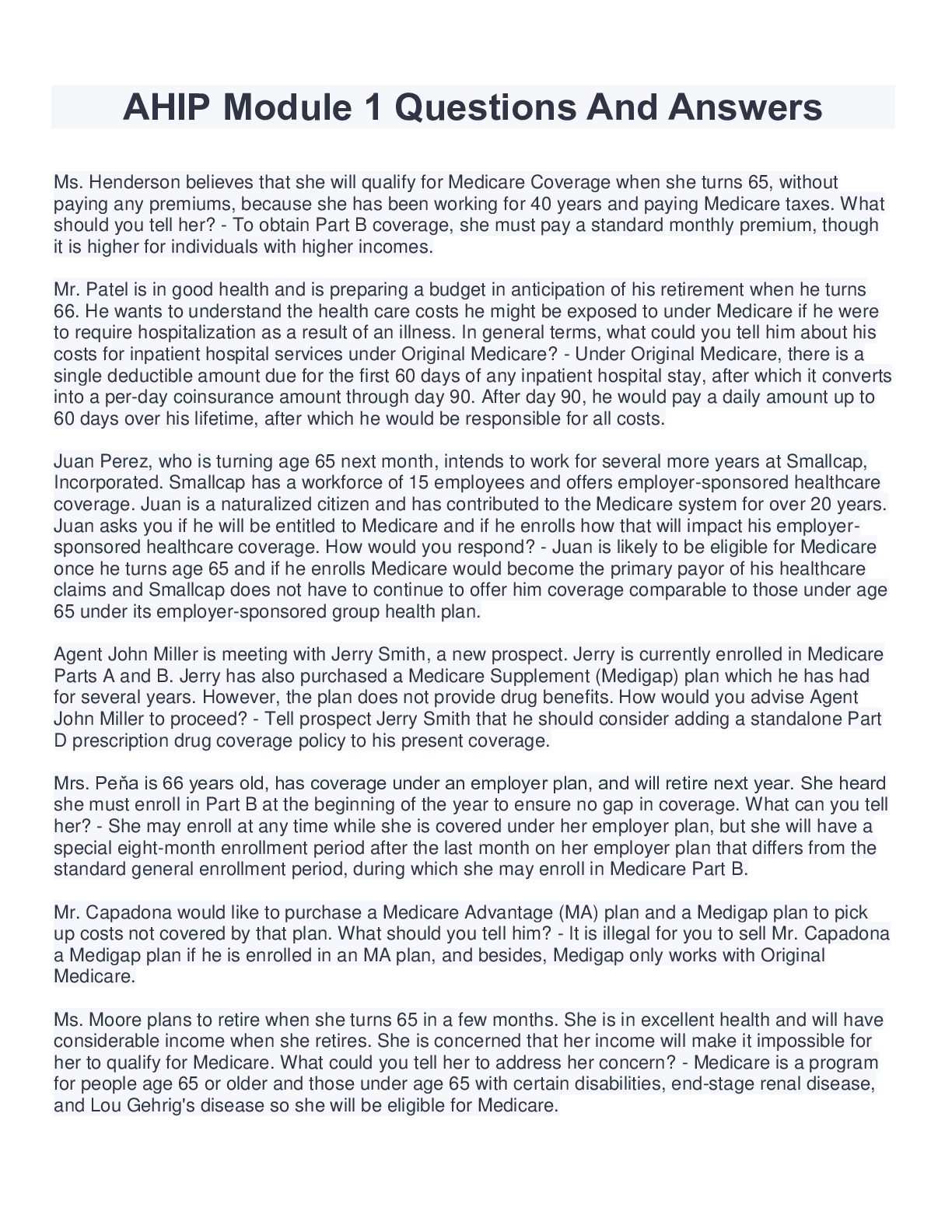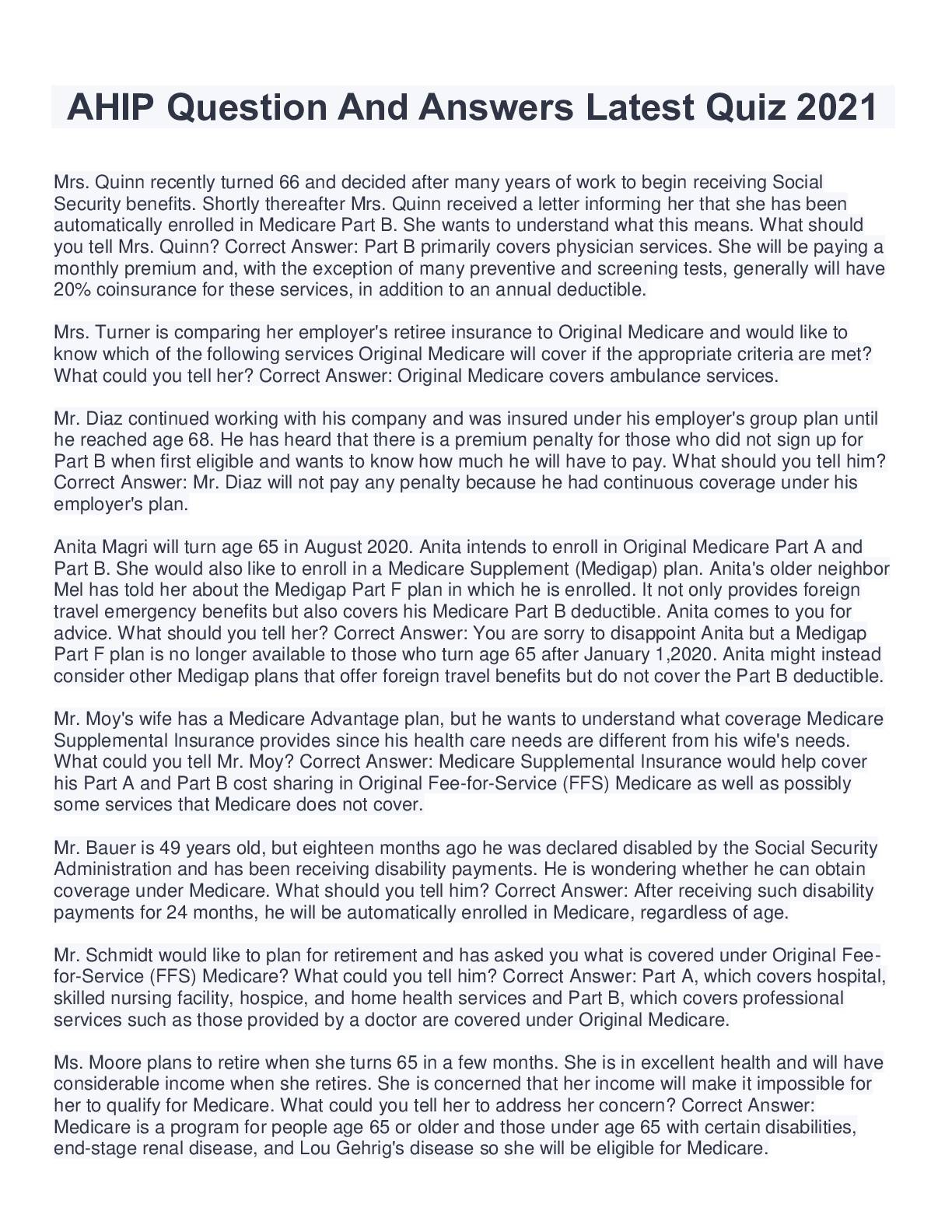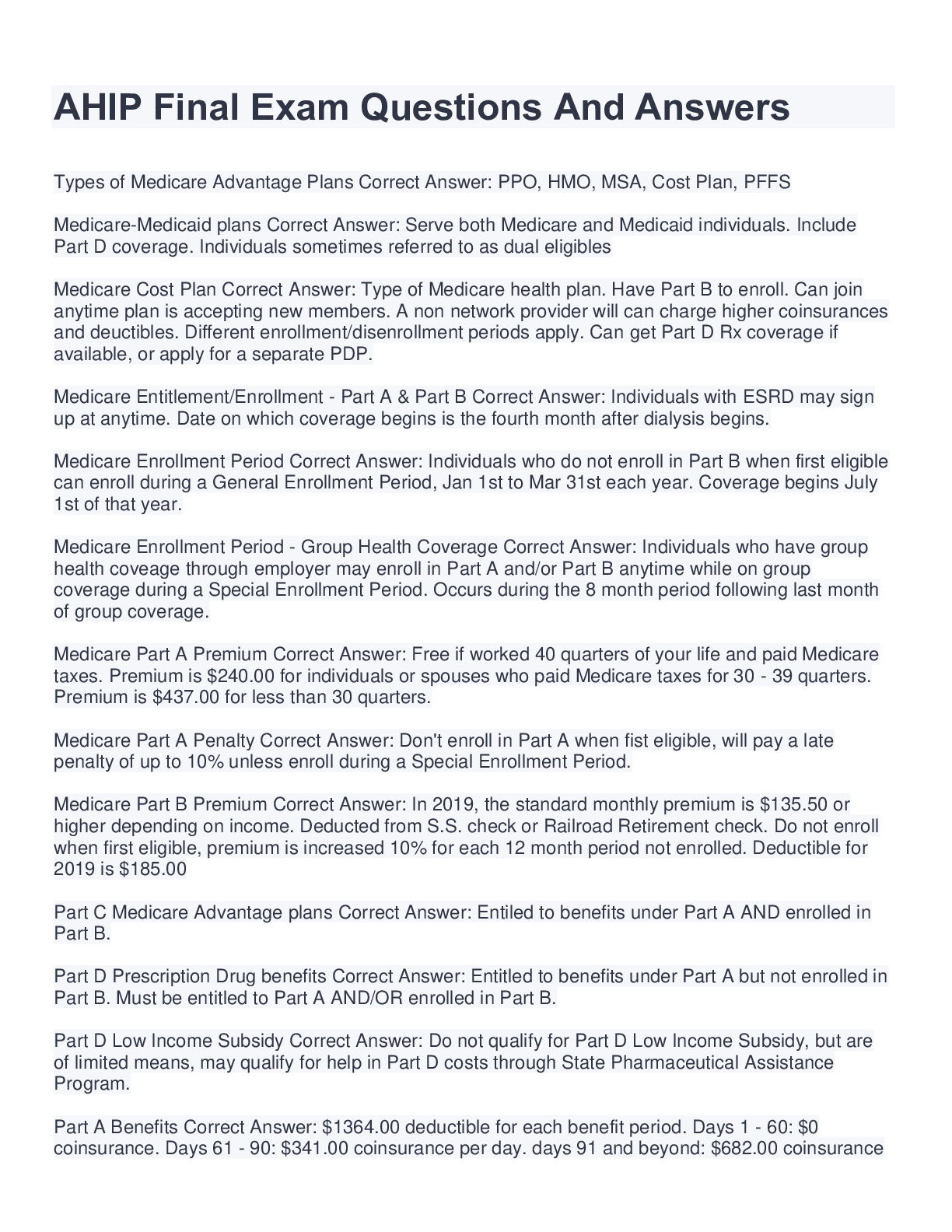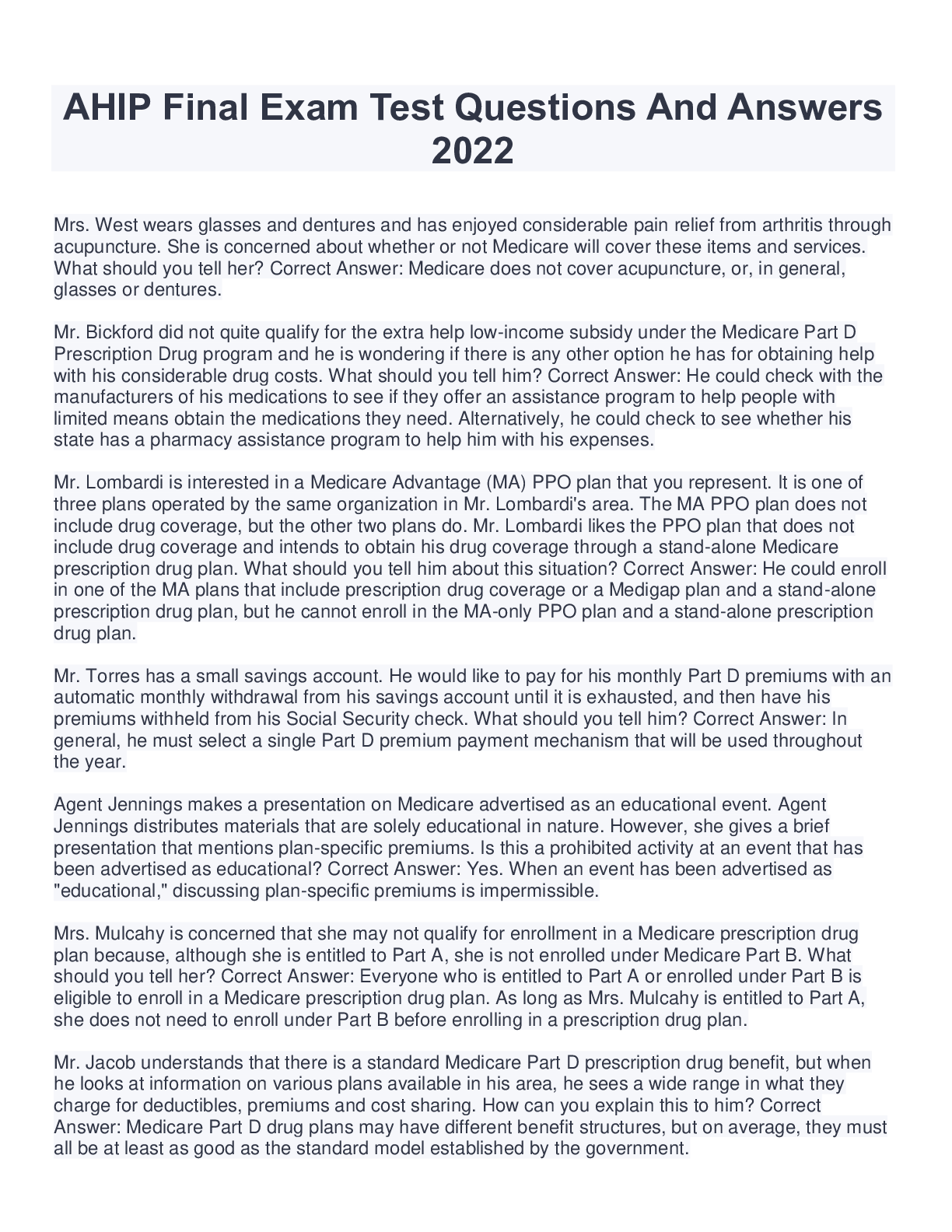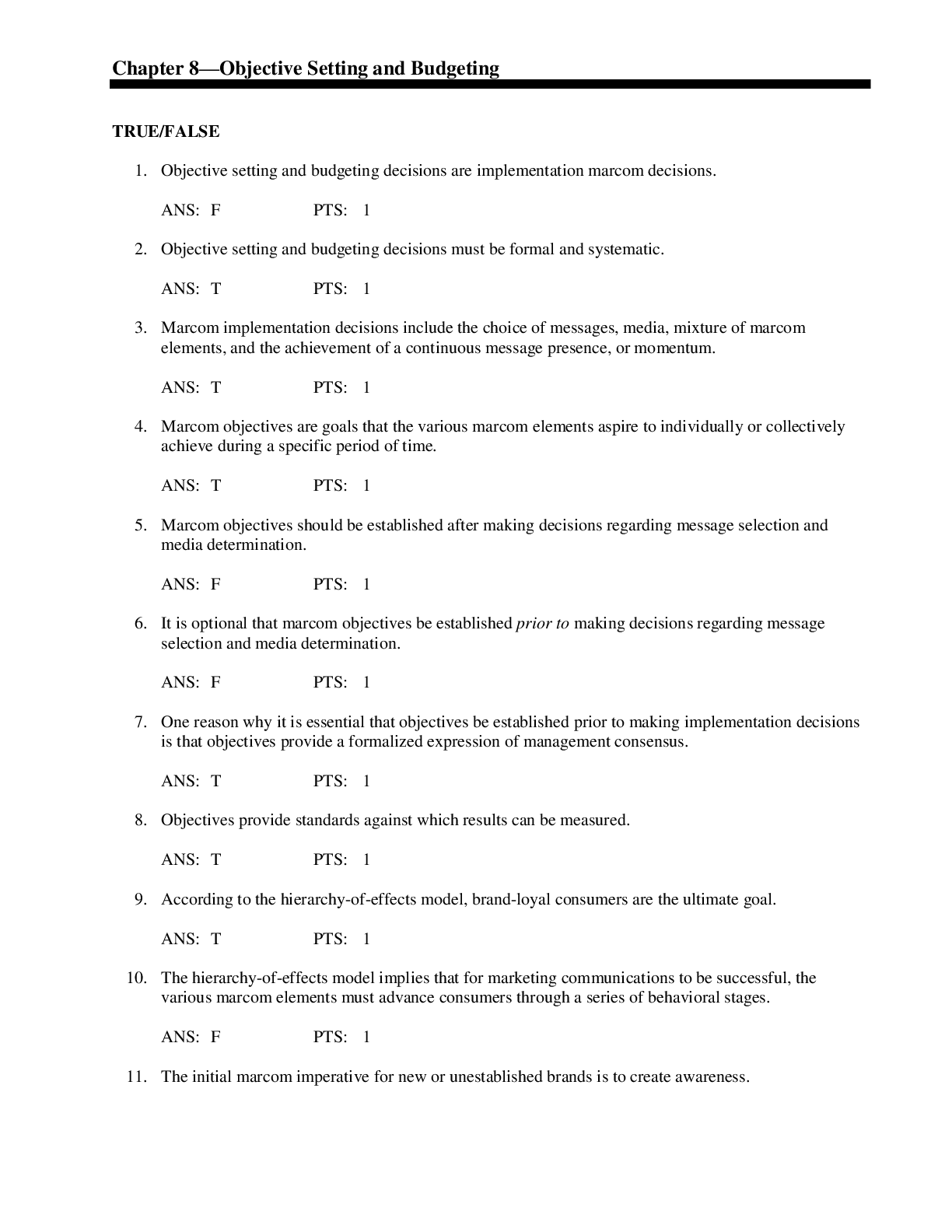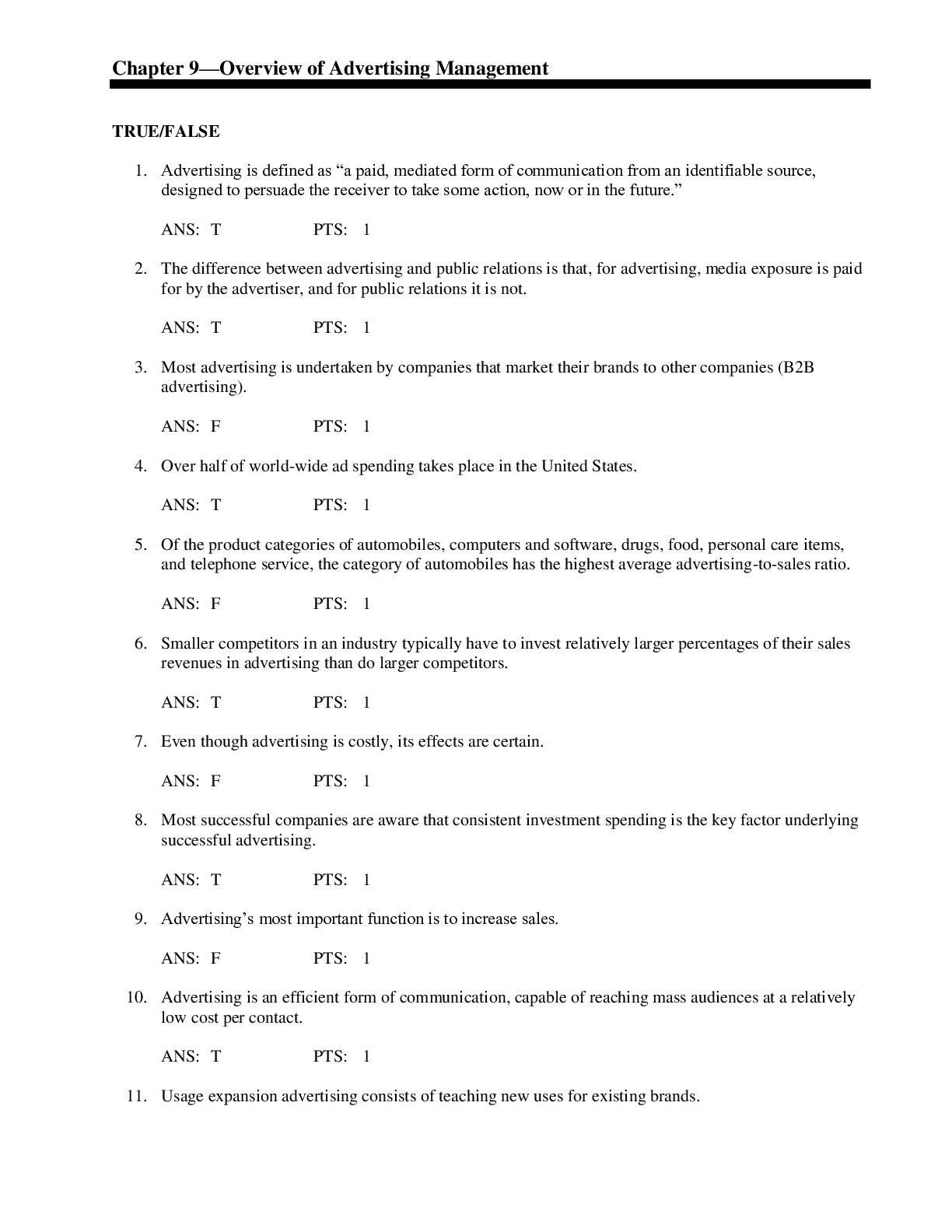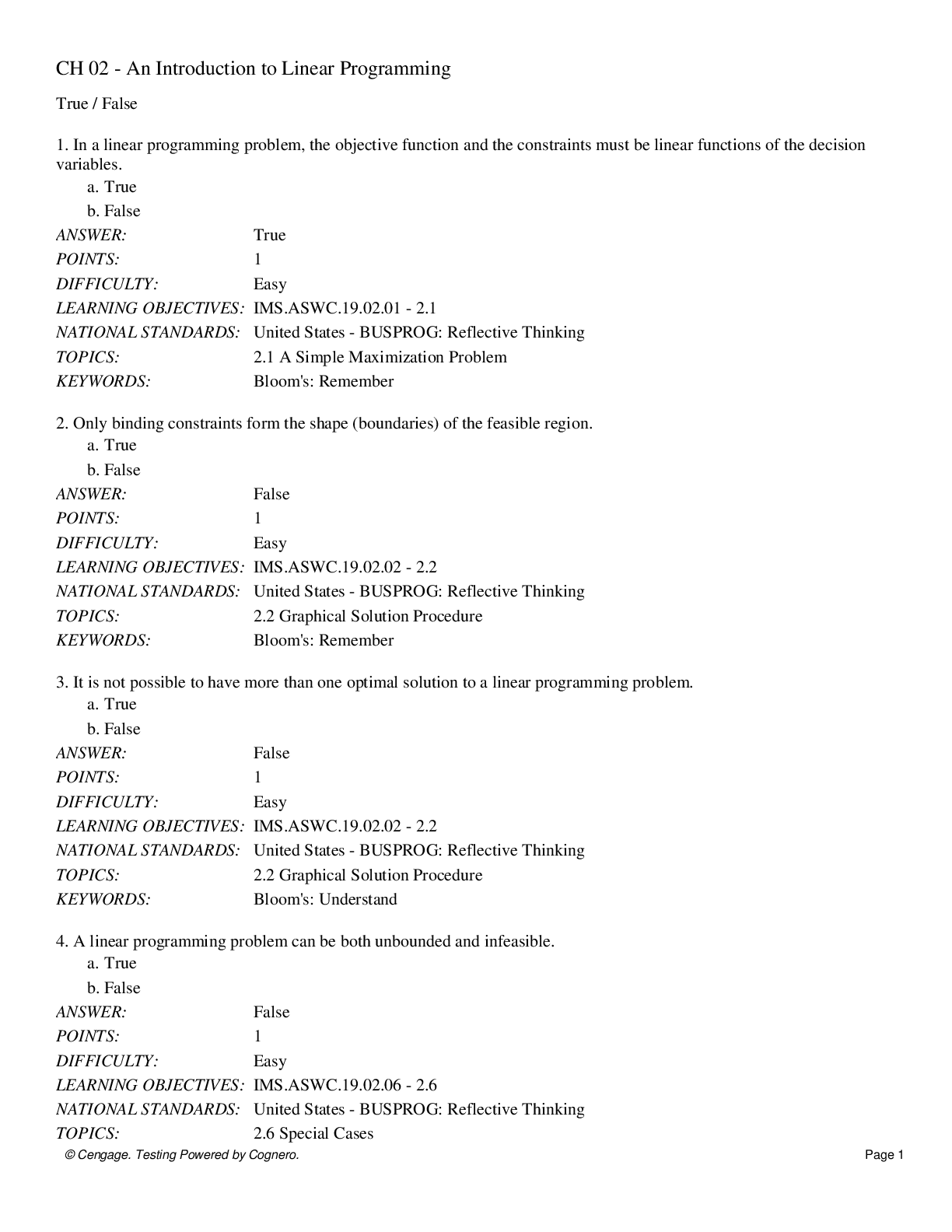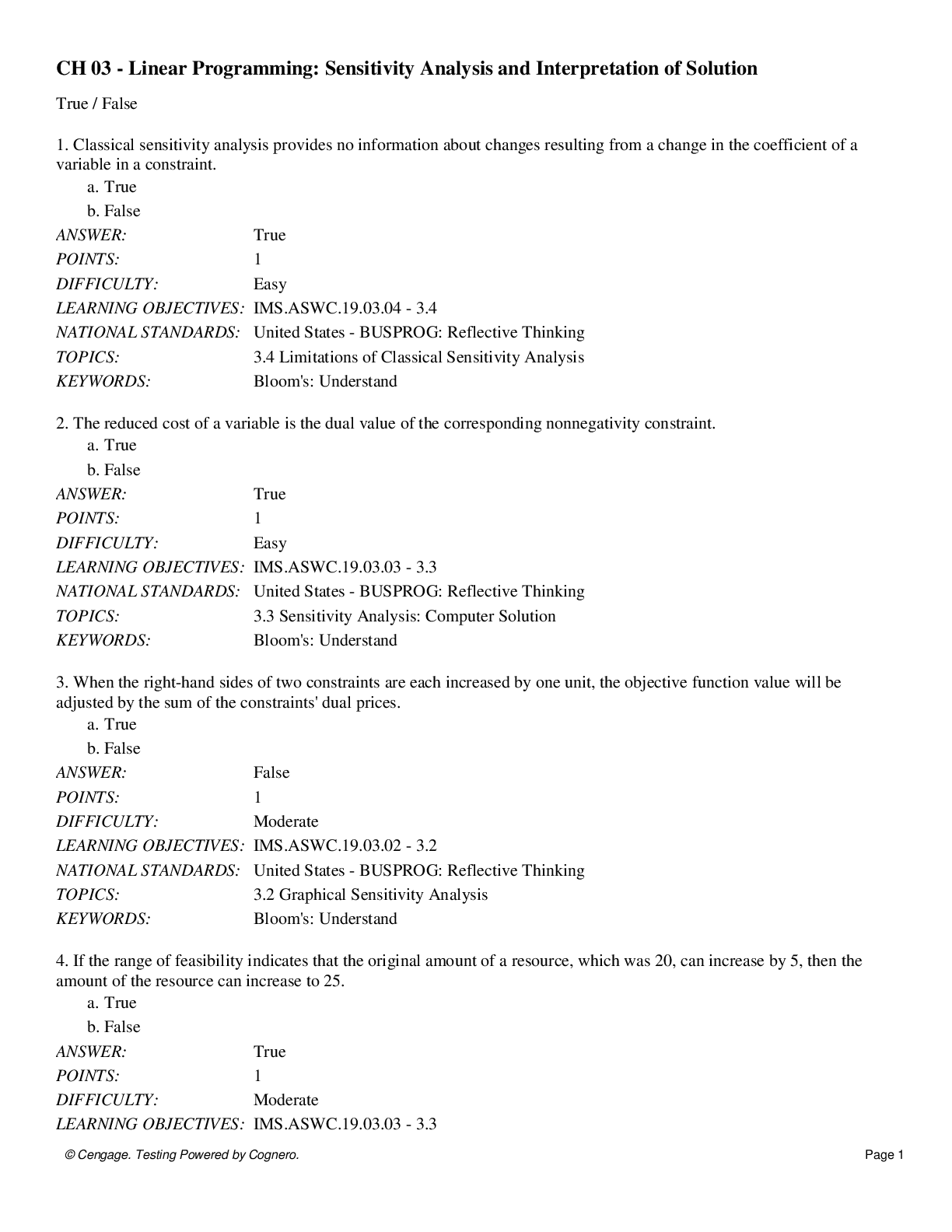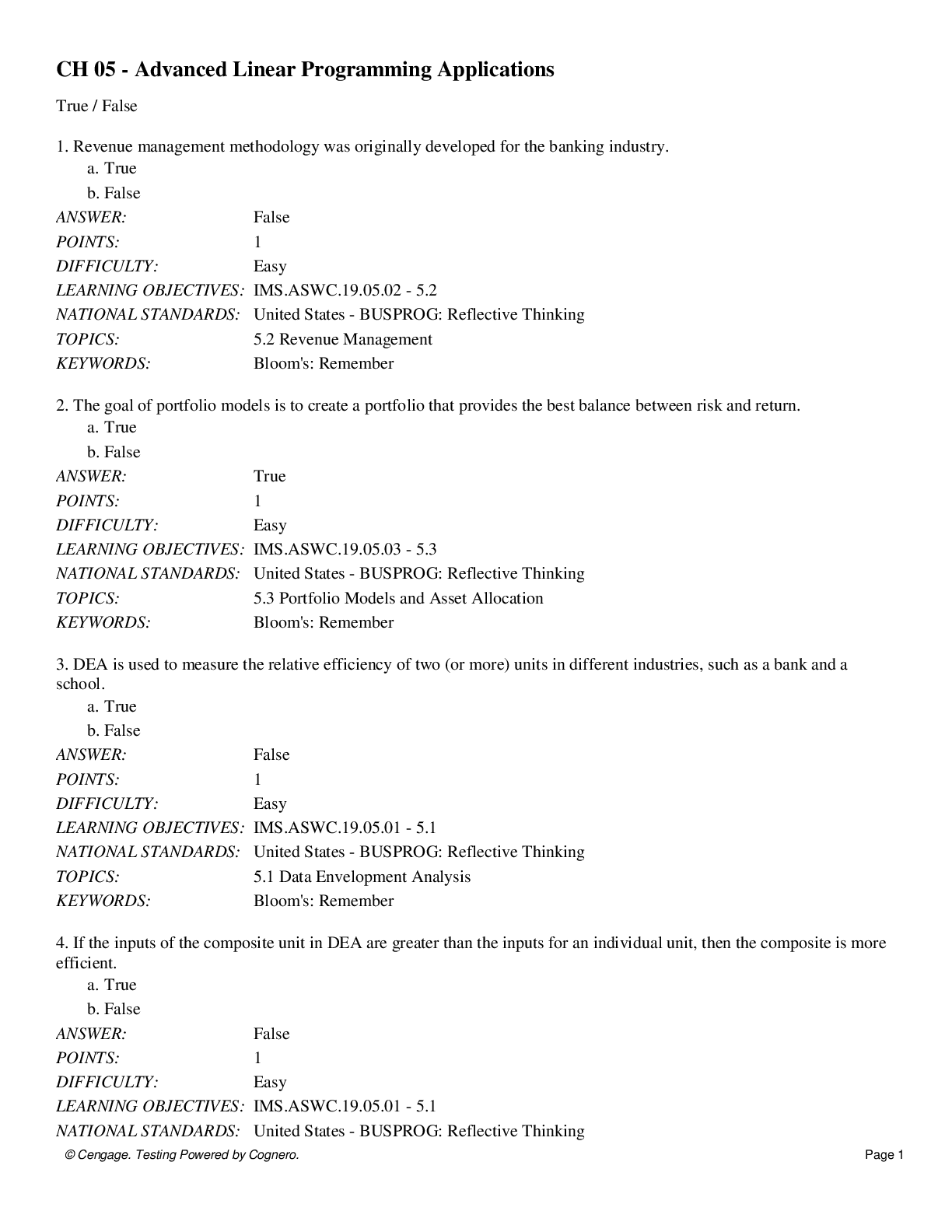*NURSING > QUESTIONS & ANSWERS > NURS 6501 QUESTIONS AND ANSWERS WITH 100% CORRECT ANSWERS (All)
NURS 6501 QUESTIONS AND ANSWERS WITH 100% CORRECT ANSWERS
Document Content and Description Below
• NURS 6501 QUESTIONS AND ANSWERS WITH 100% CORRECT ANSWERS • • Question 1 1 out of 1 points A nurse recalls asthma is classified by: • Question 2 1 out of 1 points A... 14-year-old male is experiencing an asthma exacerbation. When reviewing the lab results, which of the following cells in the submucosa promote this inflammatory response and will be elevated? • Question 3 1 out of 1 points If an individual with respiratory difficulty were retaining too much carbon dioxide, which of the following compensatory responses would the nurse expect to be initiated? • Question 4 1 out of 1 points A 20-year-old male is in acute pain. An arterial blood gas reveals decreased carbon dioxide (CO2) levels. Which of the following does the nurse suspect is the most likely cause? • Question 5 1 out of 1 points A 20-year-old male presents to his primary care provider reporting difficulty breathing when lying down. What term should the nurse use to document this condition? • Question 6 1 out of 1 points A 42-year-old male was involved in a motor vehicle accident during which he suffered a severe head injury. He died shortly after the accident from loss of respiration. The nurse suspects the area of the brain most likely involved is the: • Question 7 1 out of 1 points A 2-week-old female presents with fever, cough, respiratory distress, and empyema. Which of the following is the most likely diagnosis the nurse will observe on the chart? • Question 8 1 out of 1 points A 28-year-old male reports to his primary care provider that he has had a cold for a week and is coughing up bloody secretions. When giving report, what term should the nurse use to describe this condition? • Question 9 1 out of 1 points A young patient is admitted to the pediatric unit with cystic fibrosis (CF) exacerbation. The nurse monitors the patient closely because the main cause of death in a child with CF is: • Question 10 1 out of 1 points A 53-year-old male with a 20-year history of smoking is diagnosed with emphysema. When a staff member asks why the patient’s airways are obstructed, how should the nurse respond? The airways are obstructed because of: • Question 11 1 out of 1 points A 22-year-old female presents with chronic bronchitis. Tests reveal closure of the airway during expiration. While planning care, a nurse recalls this condition is most likely caused by: • Question 12 1 out of 1 points An 11-year-old female presents with a low-grade fever and cough. She is diagnosed with atypical pneumonia. What type of pneumonia does the nurse suspect the patient is experiencing? • Question 13 1 out of 1 points A 65-year-old male recently had a cerebrovascular accident that resulted in dysphagia. He now has aspiration of gastric contents. The nurse assesses the patient for which complication? • Question 14 1 out of 1 points A 7-month-old male presents with cystic fibrosis (CF) accompanied by failure to thrive and frequent, loose, and oily stools. Sweat testing reveals increased chloride. Which of the following should the nurse observe for that would accompany this disease? • Question 15 1 out of 1 points When the nurse is asked what causes asthma, how should the nurse respond? Asthma is thought to be caused by: • Question 16 1 out of 1 points A nurse is preparing to teach the staff about asthma. Which information should the nurse include? Airway obstruction contributing to increased airflow resistance and hypoventilation in asthma is caused by: • Question 17 1 out of 1 points A 60-year-old female with emphysema is having difficulty expiring a given volume of air. When giving report, the nurse will relay that the patient is most likely experiencing _____ pulmonary disease. • Question 18 1 out of 1 points A 50-year-old male presents with hypotension, hypoxemia, and tracheal deviation to the left. Tests reveal that the air pressure in the pleural cavity exceeds barometric pressure in the atmosphere. Based upon these assessment findings, what does the nurse suspect the patient is experiencing? • Question 19 1 out of 1 points A 30-year-old female received a severe head injury in a motor vehicle accident. She is now experiencing respiratory abnormalities characterized by alternating periods of deep and shallow breathing with periods of apnea. What term should the nurse use when charting this condition? • Question 20 1 out of 1 points While reviewing lab results, to help confirm a diagnosis of cystic fibrosis in a 1-year-old child which substance will be present in the child’s sweat? • Question 21 1 out of 1 points A 25-year-old male presents with chronic bronchitis of 5 months’ duration. When obtaining the patient’s history, which of the following findings is most likely to cause this condition? • Question 22 1 out of 1 points A 6-month-old female presents with rhinorrhea, cough, poor feeding, lethargy, and fever. She is diagnosed with bronchiolitis. Which of the following will the nurse most likely observe on the culture report? • Question 23 1 out of 1 points A 47-year-old male is diagnosed with pulmonary edema. Which assessment findings will the nurse observe? • Question 24 1 out of 1 points A 10-year-old male is brought to the ER with prolonged bronchospasm and severe hypoxemia. The most likely diagnosis on the chart is: • Question 25 1 out of 1 points A 42-year-old female presents with dyspnea; rapid, shallow breathing; inspiratory crackles; decreased lung compliance; and hypoxemia. Tests reveal a fulminant form of respiratory failure characterized by acute lung inflammation and diffuse alveolocapillary injury. Which of the following is the most likely diagnosis the nurse will observe on the chart? • Question 26 1 out of 1 points A 10-year-old female develops pneumonia. Physical exam reveals subcostal and intercostal retractions. She reports that breathing is difficult and she feels she cannot get enough air. What term should the nurse use to document this condition? • Question 27 0 out of 1 points A newborn has respiratory distress syndrome. When obtaining the patient’s history, which of the following is the most important predisposing factor for this condition? • Question 28 1 out of 1 points A 50-year-old male with a 30-year history of smoking was diagnosed with lung cancer. He was previously exposed to air pollution, asbestos, and radiation at his job. Which of the following should the nurse realize had the greatest impact on the development of his cancer? • Question 29 1 out of 1 points Which patient would the nurse assess for paroxysmal nocturnal dyspnea (PND)? A patient with: • Question 30 1 out of 1 points When the nurse observes a diagnosis of nosocomial pneumonia, the patient generally acquires this pneumonia: [Show More]
Last updated: 1 year ago
Preview 1 out of 7 pages
Instant download
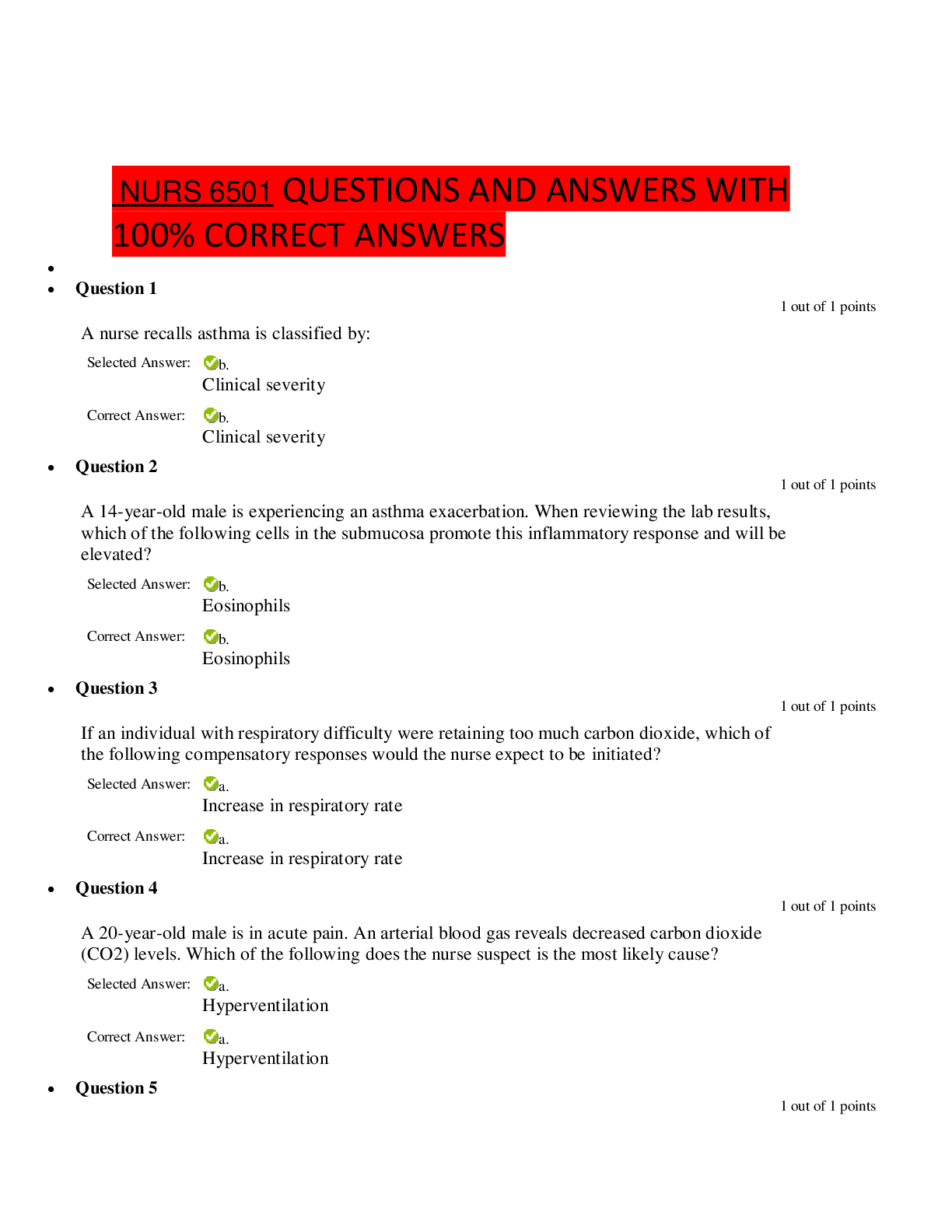
Buy this document to get the full access instantly
Instant Download Access after purchase
Add to cartInstant download
Reviews( 0 )
Document information
Connected school, study & course
About the document
Uploaded On
Dec 31, 2020
Number of pages
7
Written in
Additional information
This document has been written for:
Uploaded
Dec 31, 2020
Downloads
0
Views
39


